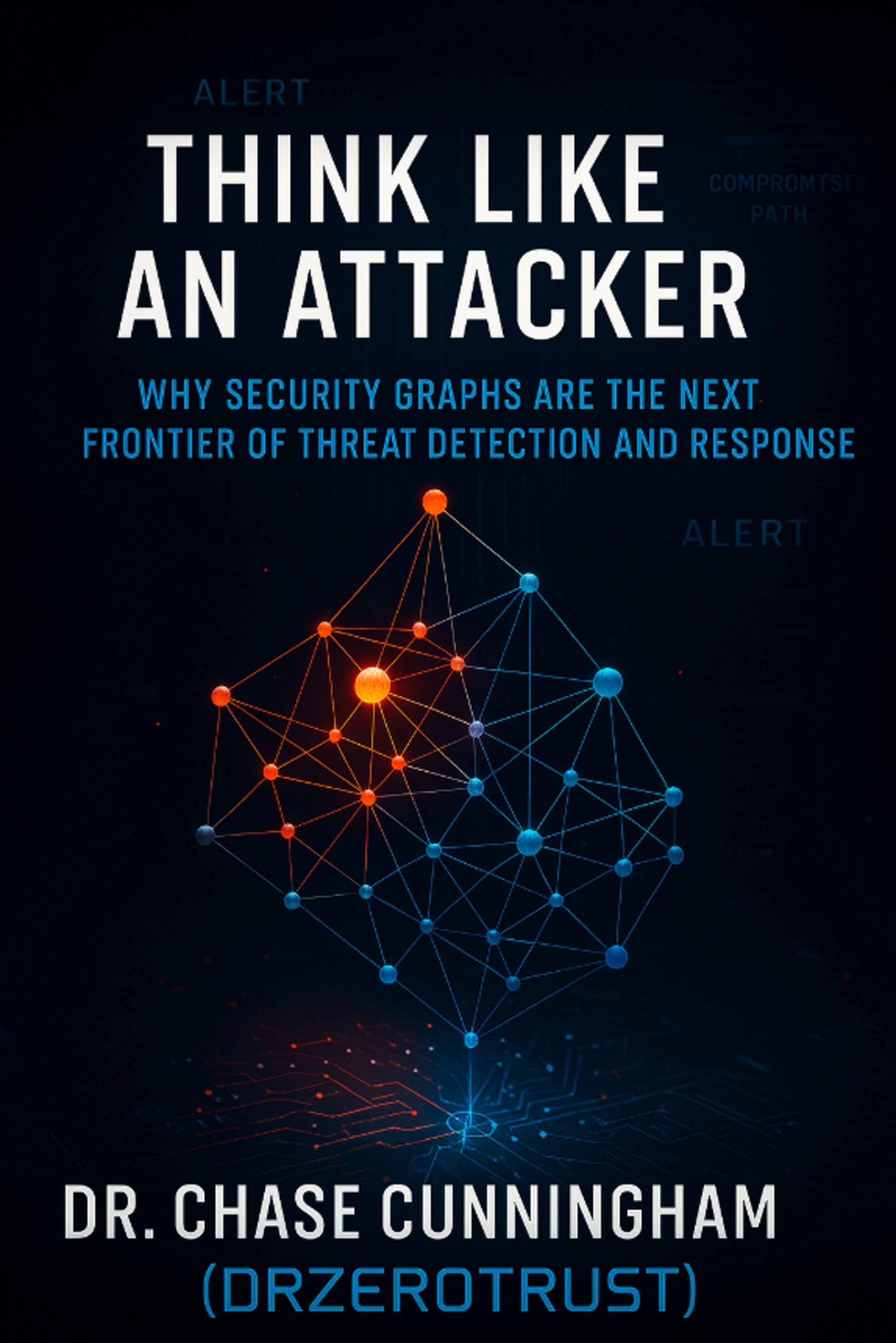It’s 10 PM. Do You Know Where Trust Breaks Down in Your IT Environment?

A compromised user. An untrusted personal device. An unexpected access attempt on a sensitive R&D system.
That’s what triggered the alert.
But it wasn’t caught by a signature or rule. It was stopped because a security graph noticed something unusual.
This isn’t a hypothetical scenario. It’s a real-world example shared by Dr. Chase Cunningham in his new ebook, Think Like an Attacker. One of the world’s largest financial institutions built its Zero Trust architecture on top of a security graph. It offered them a living, breathing map of relationships across users, devices, apps, network flows, and policies.
So when attackers used stolen credentials to try and move laterally through the environment, the graph immediately flagged the anomaly, blocked the request, and gave the security team full visibility into what happened.
That’s the kind of proactive power CISOs need to make Zero Trust real. And if you’re building Zero Trust without a security graph, you may be missing the critical context you need to know exactly where trust is breaking down in your network.
Zero Trust is about relationships
It bears repeating that Zero Trust is not a product, a checklist, or even a singular framework. It’s a strategy that assumes breach, enforces least privilege, and requires continuous verification across every interaction.
But you can’t verify what you can’t see, and you can’t control what you don’t understand.
Traditional security models are siloed. One tool handles identity. Another handles network traffic. A third handles endpoint telemetry.
They’re all valuable, but they don’t talk to each other in a way that gives you real-time, relationship-rich context.
Security graphs do.
They turn fragmented signals into a cohesive story. They show you how a single compromised credential could cascade across workloads, elevate privileges, access data, and open a path for exfiltration. That's the real-world risk CISOs are accountable for.
A security graph can tell you where trust breaks down
In his e-book, Cunningham makes a critical point. Graphs help you model trust and detect when that trust is violated.
Think about a cloud environment. Thousands of assets, spinning up and down constantly. Who’s talking to what? Which flows are legitimate? Which are high-risk outliers?
Graphs help you model trust and detect when that trust is violated.
A graph can show you, visually and dynamically.
It’s what enables complete visibility. It’s how you detect lateral movement. It’s what lets you say with confidence: “This communication path is expected. That one isn’t.”
Roles aren’t enough anymore
Another major blind spot for many Zero Trust initiatives is over-reliance on identity and access management (IAM) systems that stop at roles.
Security graphs make relationship-based access control possible. Now, you’re not just asking “Is this user in the right group?” You’re evaluating:
- Who do they report to?
- What device are they using?
- Is that device healthy?
- Are they in the right location?
- Is this access typical?
Each of those data points is a node in a graph. And when any one of them looks wrong — or doesn’t line up with established behavior — you can block access, trigger step-up authorization, or investigate deeper.
Zero Trust requires context-aware decisions. Graphs make those decisions possible.
For CISOs, it’s about visibility, evidence, and ROI
Let’s be real: most boards don’t want to hear about the technical details of your security operation. They want to know three things:
- What are our biggest risks?
- Are we protected?
- Can you prove it?
A security graph helps CISOs answer all three clearly and credibly:
- Risk insight: See the shortest attack paths to crown-jewel assets.
- Real-time detection: Spot anomalous behaviors and unauthorized flows as they happen.
- Proof of control: Visually demonstrate segmentation, access decisions, and lateral movement prevention for audits and board reviews.
Graphs let CISOs show — not just tell — how Zero Trust is working in practice.
You can’t enforce what you can’t see or understand
Most CISOs already buy into the Zero Trust vision. That’s a huge step forward compared to just a few years ago.
But the truth is that vision alone doesn’t drive outcomes. Visibility does.
If your Zero Trust architecture isn’t backed by a security graph, you’re flying blind. You might stop some threats, but you’ll miss the ones that hide between the cracks.
A graph is what connects the dots, flags the anomalies, and keeps your defenses dynamic.
So, the question isn’t whether your organization will adopt graph-based security. It’s whether you’ll do it before or after the next inevitable breach.


